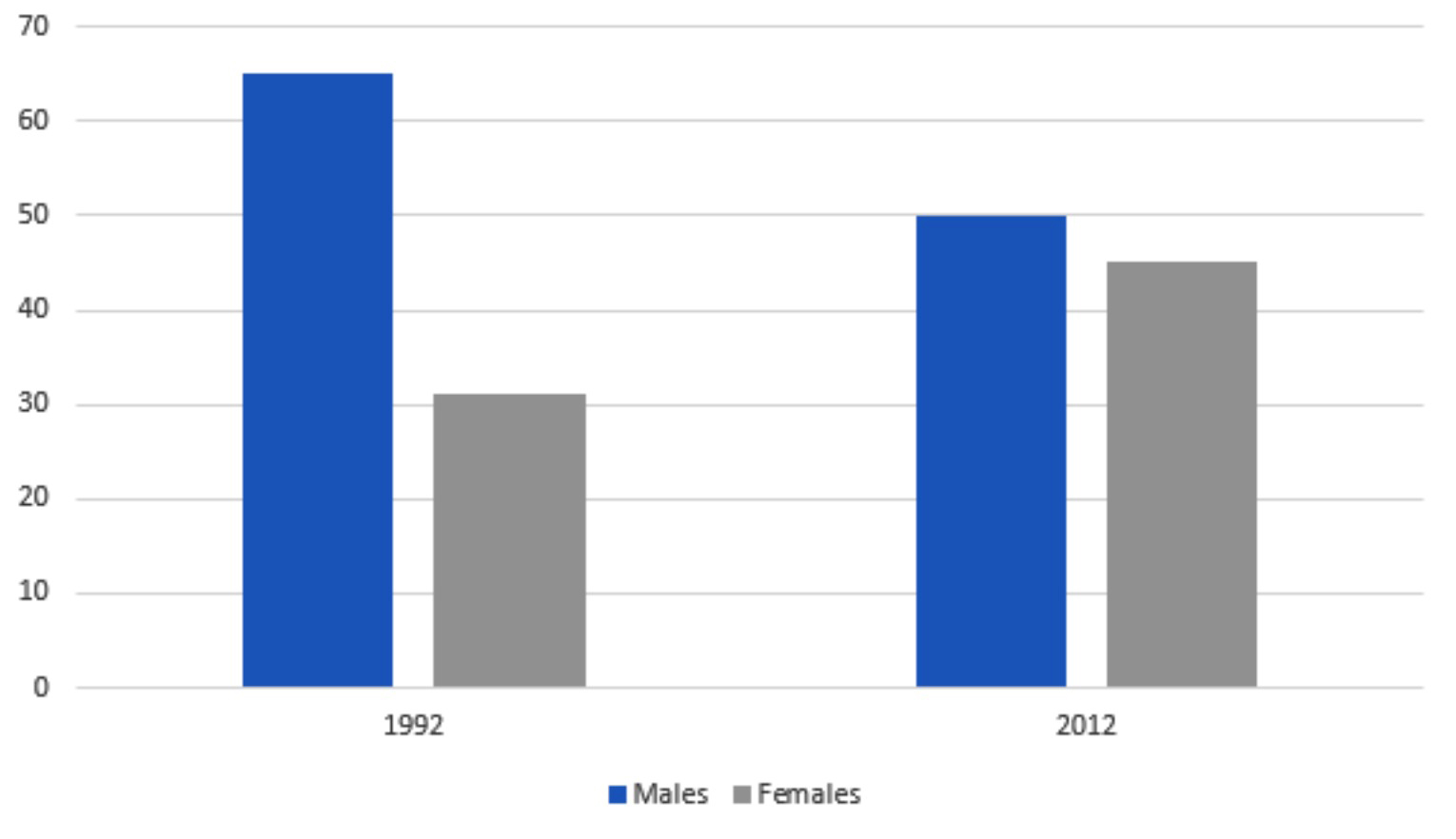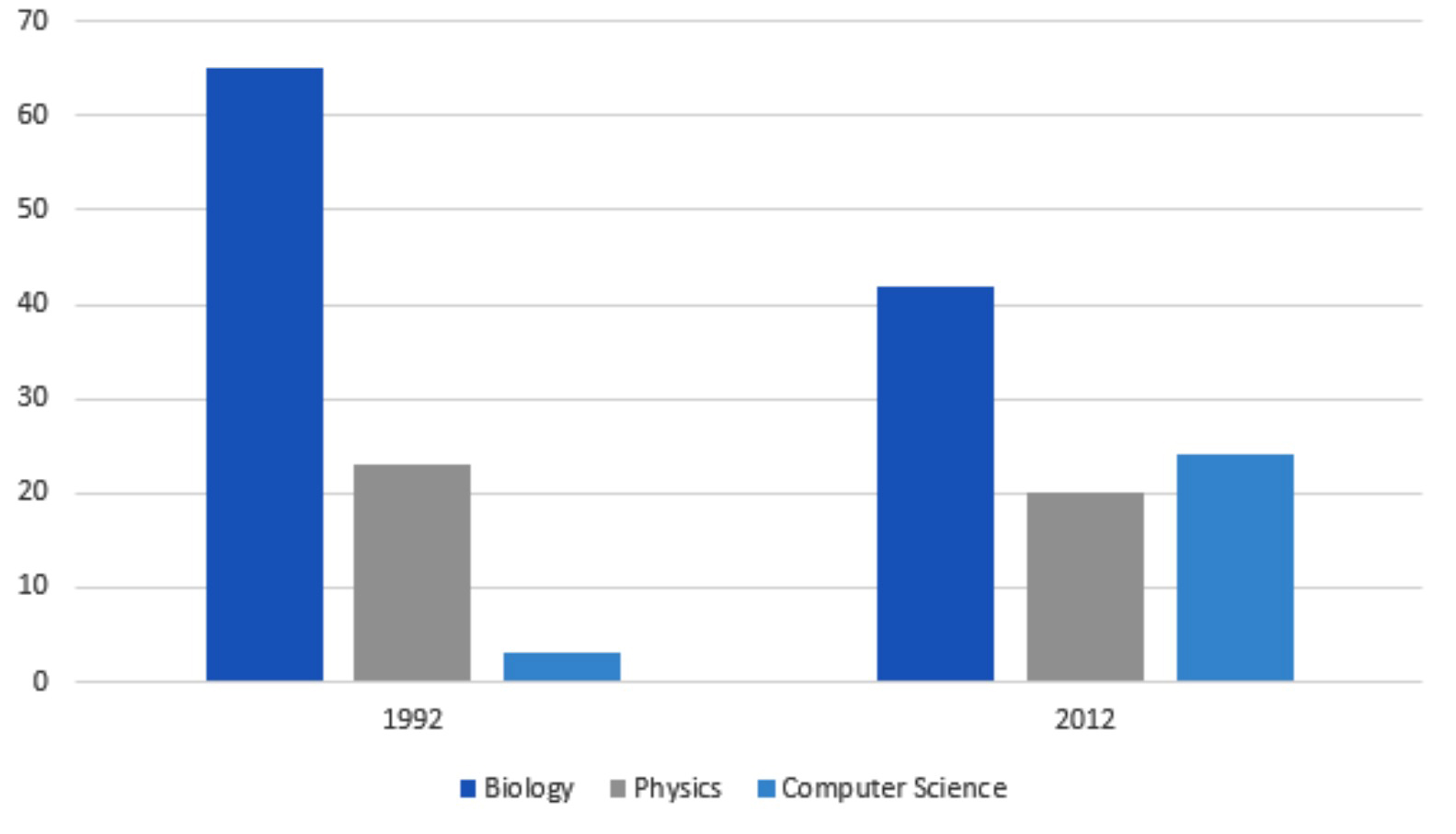The chart gives information about the proportion of students choosing different
science subjects in a university in 1992 and 2000
Write at least 150 words.


WRITING TASK 2
You should spend about 40 minutes on this task
Write about the following topic:
The increase in the production of consumer goods results in damage to the natural environment. What are the causes of this? What can be done to solve this problem?
Give reasons for your answer and include any relevant examples from your own knowledge or experience.
Write at least 250 words.
WRITING TASK 1
The bar charts show the percentage of undergraduates choosing three different science
subjects in 1992 and 2012.
In general, there were more male than female students learning science subjects in the
given two years. Additionally, biology was most chosen by the students, while those
learning physics and computer science took up smaller proportions.
In 1992, nearly 70% of the students were males, while their counterparts only accounted
for 30%. Over the following 10 years, despite a growth of 10%, the percentage of female
students was still lower than that of males which declined to under 50% in 2012.
Biology was preferred by approximately 65% of the students in 1992, which was nearly
triple the figure for physics, at only 20%. Computer science, on the other hand, was
the least chosen subject, at under 5%. The year 2012 witnessed a significant drop
in the proportion of biology learners, from 65% to over 40%, whereas the figure for
physics remained unchanged at 20%. Computer science became more popular with its
percentage increasing substantially to over 20%.
(174 words – Band 8.5)
WRITING TASK 2
Nowadays, as more consumer goods are manufactured, more damage has been inflicted
to the environment. I will outline several reasons for this and put forward some measures
to this issue.
First of all, the increase in the production of consumer products harms the environment
in two ways: the chemical by-products from the manufacturing process and the mass
production of disposable goods. As more goods are produced, more toxic wastes and
emissions are released from factories into nature. Water sources are contaminated, and
the air is severely polluted, which results in the deaths of many marine and terrestrial
animals. Also, to accommodate customers’ ever-increasing demands, more single-use
products are introduced, most of which are non-biodegradable. Though having a short
lifespan, these products can remain as wastes for thousands of years, turning our planet
into a huge landfill and posing a threat to the living habitats of all creatures.
Actions must be taken as soon as possible to minimize the negative impacts on environment arising from the increasing amount of consumer goods. First, companies should promote the use of eco-friendlier materials. For example, the giant coffee chain Starbucks has recently replaced plastic straws with reusable alternatives made of materials like paper or bamboo. In addition, many governments are also encouraging the development of more sustainable manufacturing processes. For instance, many states in the U.S offer tax breaks and incentives for businesses using renewable energy, and some firms are even allowed to purchase green energy at cheaper prices than traditional fossil fuels.
In conclusion, there are two main reasons why the environment is severely impacted by
the increase in production of consumer goods. To address this issue, governments and
companies must join hands to make the production lines more environmentally friendly
by switching to greener materials.
(293 words – Band 8.5)
